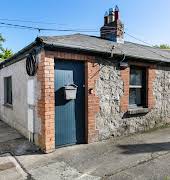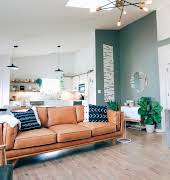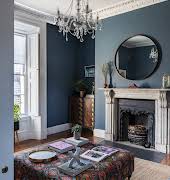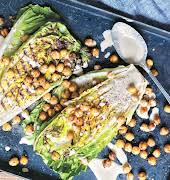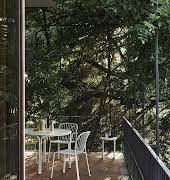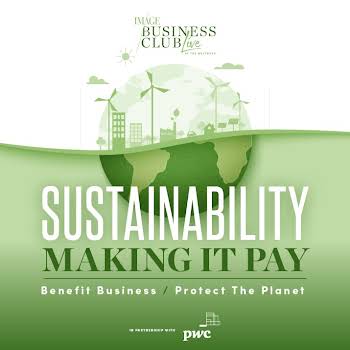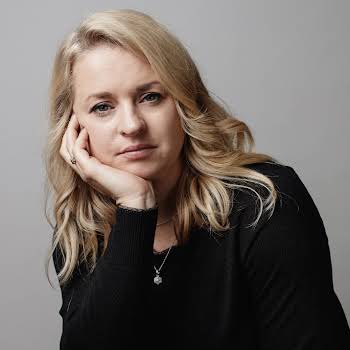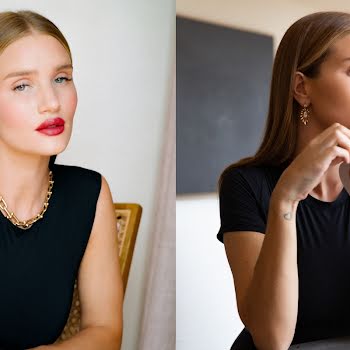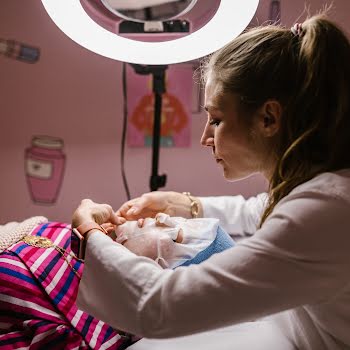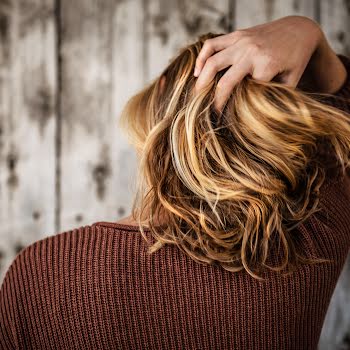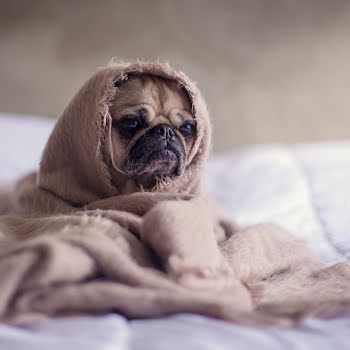
By Melanie Morris
09th Dec 2017
09th Dec 2017
Access to one of the world’s most significant image makers is hard to get, so when MELANIE MORRIS was granted an audience with François Nars, she was on a flight before one could say “don’t forget your passport”.
If ever you wanted context as to where make-up artist François Nars’ star sits in fashion and beauty’s firmament, you just need to be invited to meet him. As I waltzed into the Ritz in Paris one Monday morning, a battalion of very senior beauty comms girls were there to greet me, all dressed in black. I’m led up to the biggest suite I’ve ever seen in my life, and there he is, with even more ladies in waiting, and a fancy plate of macarons that nobody will touch (even though I’m longing to). After years of buying his lipsticks, Orgasms and foundations, collecting his palettes and skincare to display like objets d’art, and lugging his massive coffee table books from old home to new home, this was going to be quite a moment.
I’m introduced, and we sit down. Mr Nars looks the exact same as his PR images – a shot of dark hair, strong black spectacles, a dark suit, and skinny black tie with tiny pale print. It’s very Mr Porter altogether. He’s also very friendly and open…This is going to be fun.
Do you think the make-up and fashion world today is different from the era when you were starting out? The business has changed a lot. I think the whole fashion world has had a wild evolution compared to when I started in the late 1970s. There’s been an incredible growth and extension of the industry, and now there are so many designers and creators, so I came along at a great time. It was much easier to create a make-up line in 1980.
Your kit bag must have been limited back then. Can you remember what products you were working with? I would buy everything. So it was actually fabulous because I really learned so much about products by using every product from every single brand, from supermarket ones to the high-end brands around at the time, like Chanel, and Dior. I made a selection of whatever I felt worked well for me – the foundations, powders, lipsticks; but it was all mixed up from probably about 50 different brands.
How did your own make-up line begin? Eventually, I thought maybe it would be good to have a brand where, actually, every single product in the collection worked. I wouldn’t have to go to different brands to pick a better foundation or find that the powder works better from somewhere else. So that was the fun part, having the knowledge of products and what works. As a make-up artist, working on many different women since 1979, you really learn about products more than anybody else.
Why did you launch with lipsticks? I thought it was a great way to test the market. My budget was actually so limited at the time that we felt we had to test the name and the product first. And it was a great way to actually throw the line on the market by only making it a very limited edition of lipsticks and to see how the consumer would react. Which, you know the rest – they reacted quite well!
You would have been one of the very first make-up artists to create a make-up line, so you were taking a real step into the unknown. Yes, I think Bobbi Brown started right before me, MAC was already there. They were make-up artists, but they were very different make-up artists to me; they were not like studio make-up artists. I was doing Vogue; working for the very big fashion magazines and designers. So MAC was a little bit different. And Bobbi was doing a little bit of editorial, but not as much. Laura Mercier arrived a little bit after me, and she was also in the same market as me, working with the same people and photographers. So, yeah, I really was one of the first ones.
You obviously started using your lipsticks on your shoots and everything, and word of mouth spread very quickly. Yes, it was a great way to promote; great advertising. I was working at the time on the big supermodels from the 1980s and ’90s like Linda, Naomi, Cindy… So everyone was interested, and I got so much coverage because all the models had the product. So I was very lucky – it was perfect timing!
How did you develop a love for photography? I always loved photography. When I was a kid, I was already starting to take pictures of my friends, my mum and all that, putting make-up on everybody and then taking photographs, so I think it started at that time. But professionally, when I started the brand, we didn’t have the budget to hire a photographer to shoot the products for Nars, and I felt bad asking people to help me, so I thought, let’s do it! Let’s jump into it and take the pictures and create campaigns and an image for the brand. It was so exciting because loving photography as much as I do, and having worked with the most iconic and legendary photographers of the 20th century – Avedon, Irving Penn, Steven Meisel… It was scary, but it was very exciting because we really had no other choice. I guess I felt like that was the way it was supposed to happen. I created the images for two chosen models who I felt fitted the image of the women that I wanted to represent the brand, and it was great. That’s how it happened. I was not quite forced into it, but almost! I was brave, but it was very easy to be brave because it was so much fun.
“In two seconds, a woman can grab a lipstick, even if she doesn’t wear make-up, and she will look great.”
Who were the models most significant for you to work with, and that you loved? There’s been so many. I must say, I’ve been so lucky in my life – I’ve met so many great, fabulous faces and personalities. Of course, I would have huge affection for the supermodels; Linda has always been my muse, because I had so much fun creating so many faces on her, and Meisel was the perfect photographer to do that with. We would take a girl, and we would fall in love with that girl, which happened with Linda specifically, but also Naomi and Kate. But Linda was a great example – she was the one, we really sculpted her and created “Linda”. And that was really fun for Steven, of course, but also for me and the hairdresser. And she got it – she wanted to go into all those different characters; she wanted to cut her hair off, she wanted to become blonde, she wanted to become a redhead, or she could have had long hair… Linda was very open to it all. ThThat’s the thing – sometimes today with models, it’s difffferent; they’re not always so available and so into it.
And what about celebrities?
I worked with everyone at that time, from Julia Roberts to Nicole Kidman to Tilda Swinton, who I love today, and Charlotte Rampling… all those people who, in the end, I was able to photograph for the brand, for the campaigns. It’s been really good to have all these major icons represent the product. And recently, Charlotte Gainsbourg, of course. It all makes sense, in a way. They all look very different, but they are the same type of women – strong characters, strong personalities, definitely brave women, and not necessarily your obvious choice of maybe just pretty faces.
Is there a difference in translating your products from shoots and runway to everyday use? Or, when you’re creating products, what do you keep in mind? Not really. To me, when I design all the colours in my lab and in my studio, I think of women in general. I really don’t think actress or movie star or pop singer – I’m really thinking, what makes a woman look beautiful? Of course, I have people that I think about who I’m going to decide to shoot for the campaign, but that doesn’t affect my way of deciding, ‘okay, I want to do this new product’, because I think about beauty and women in general. A woman is a woman, and beauty is beauty. To me, a product that works is one that makes a woman look beautiful.
If there were four or five products you were particularly proud of creating, what would they be? I think the Multiple sticks were definitely one of the great things that came out of my lab, because it’s an easy product for everybody and works in everyday life; you can carry one in your bag and look good in two minutes. I love lipsticks; they are very important products, for make-up artists and for a cosmetic line. Lipstick is one product that will forever be a bestseller. In two seconds, a woman can grab a lipstick, even if she doesn’t wear make-up, and she will look great in a very short amount of time. I think lipstick is a very feminine gesture, it’s very glamorous. And I’m always careful to make the perfect eyeliner – I’ll make them re-do it a hundred times if I’m not happy with the formula. I think sometimes the team must hate me… I give them a very tough time, because of my knowledge of products; I know a liner is good if it stays well, if it has the right depth, if it doesn’t start running after a while – I really test it a lot. And then the powders are also very important. But there are so many other products – the liquid blush is great, the illuminator, the concealer… A concealer seems like a very easy product, but it’s not. It can make you look older; it can start creasing in the lines. My mother, for example, when I was a kid always hated concealer; she didn’t want to look like she was wearing too much make-up, which I kept in my mind when creating a concealer – I thought, this better be great!
The Man Ray collaboration you’ve done is incredible, and as a photographer, it must have a special place in your heart. I always loved Man Ray. As a kid, my parents had so many books of Man Ray, so I think I got the photography virus at a young age. Going through pages of those books, I always thought his work was so modern. Even when looking at pictures of the 1920s, I felt like they could have been taken when I grew up in the ’70s… They were so timeless. And I love daring photographers that really push boundaries. When you see an image, it’s like something is happening. He really hit me creatively. I never thought the Man Ray estates would agree to do a make-up collaboration, so when I got the news they said yes, I was in heaven.
Well, it’s a beautiful association. Yes, I think it makes sense. He had incredible sophistication, such a sharp eye. I love his work from the 1920s and ’30s because some of the make-up from those eras was so iconic… the 1920s with the dark lips… The hardest part was to pick the pictures – there was a choice of thousands; we had access to the entire catalogue. We had to narrow it down to 14 images; that was torture because I wanted everything.
Do you collect photography? Yes, I have Avedon, Penn. Some unknown photographers… also big names. I also bought a collection of photography of the South Pacific from the 1900s, and have a huge collection of portraits from that era. And I have originals from the 1970s, so quite an eclectic mix. I am a hoarder. I’m not as bad as Karl (Lagerfedl) – he’s worse than me, but I love bools, and have a lot of first editions.
You have an island in the South Pacific, which I hear you’re selling… Yes, it’s for sale, but so far, it’s not happening. It’s very hard to sell something like that, but I’m not going as much as I used to. I’m very busy working and travelling, so I feel like the place is sitting there, and it’s very high maintenance because you have to have people constantly working and living there to keep it safe and take care of it. It’s one of the most beautiful places on earth, but maybe I should get somewhere new, because I love creating a place – that was a great adventure. I love the whole concept of buying somewhere and doing it from scratch or renovating… It’s incredible to turn the page and create another world.
What do you think of the way beauty and make-up are shown on social media? I think it’s fun. But I come from a different generation. I tried to adapt, but it moves so fast on Instagram and social media. It’s like a job you have to constantly be there for. I’m so busy doing other things that I don’t really have enough time to be constantly checking; but I do, once in a while. There are incredible make-up artists out there, creating their own vision, and I think it’s very interesting. I would definitely work with some of them. I like to keep looking for new talent and people that have something to say.
What advice would you give make-up artists? I always have one piece of advice – the same advice I give myself as an artist, which is to be passionate and go all the way; don’t compromise; follow your instincts. Work hard, but be passionate. If you’re not passionate about being a make-up artist, change your profession, because, like a painter, like any artist, you have to love what you’re doing. And don’t compromise your career. I always knew what I wanted to do; I knew the photographers I wanted to work with, the magazines I wanted to work with. I was so determined to reach my goal that nothing could have stopped me. You have to be like that in life. Especially when you are a creator; a stylist, designer, make-up artist or photographer – you really have to be so determined and know exactly what you want. And as a make-up artist, you have to have a vision of beauty, loving women, a vision of what you want that to look like; have a message. Focus and know what you want.
Do you think it’s important to align yourself with clients you particularly like to work with? Of course. Surround yourself with the right people. If I have one talent, it would be to really know how to pick the people I work with. It was the same when I picked Fabien Baron to create my packaging. ThThe people you work with are very important – they help to get you out there and support your talent. I was extremely lucky because I had done all my research as a kid, going through magazines my mom had, and I’d say, ‘I love this photographer Helmut Newton; I want to work with this guy one day’. You have to have the balls to say, ‘I love this, that’s what I want to do’.
Were you a nervous young man or were you flamboyant? No, I was always very shy. I tried to fight it over the years; now it’s a little easier. I have to be more in front of the camera, which was never my goal, but I have to do a lot of press and all that; but originally all I wanted to do was make girls beautiful and be backstage. I was always very laid-back. I did my job, but I was very friendly, very positive. I think I have a good sense of humour, so we had a lot of laughs, especially in the ’80s. At work, you have to have fun no matter what. I hate people who are too serious – I could never work like that.
But it wasn’t easy to make the first approach – you had to work for it. Yes, but I guess I was lucky because some people saw something in me. I met the right people, from Polly Mellen at American Vogue to the people at Elle and French Elle, French Vogue, Marie Claire… The make-up artist and assistants saw “this kid has talent” because I loved what I was doing. From the beginning, I knew what I wanted, I was not confused – shy, but not confused! I knew I could make a girl look beautiful.
When you look back, what makes you most proud? Probably the hard work. We worked for nights, days, everything, and it paid off. People knew ‘this guy knows what he’s doing’, and I think that’s the trust. Especially with the big people I work with, photographers, celebrities – there was always a lot of trust. If there is no trust, then you can’t get from point A to point B. You’ve got to trust the people you work with, no compromises. Interview over, Nars hands me a palette which he’s signed to me, then asks if there’s anything I’d like to ask him that wasn’t on my list of pre-approved questions… which I did. But those questions, and his answers, remain between us. #trust.


